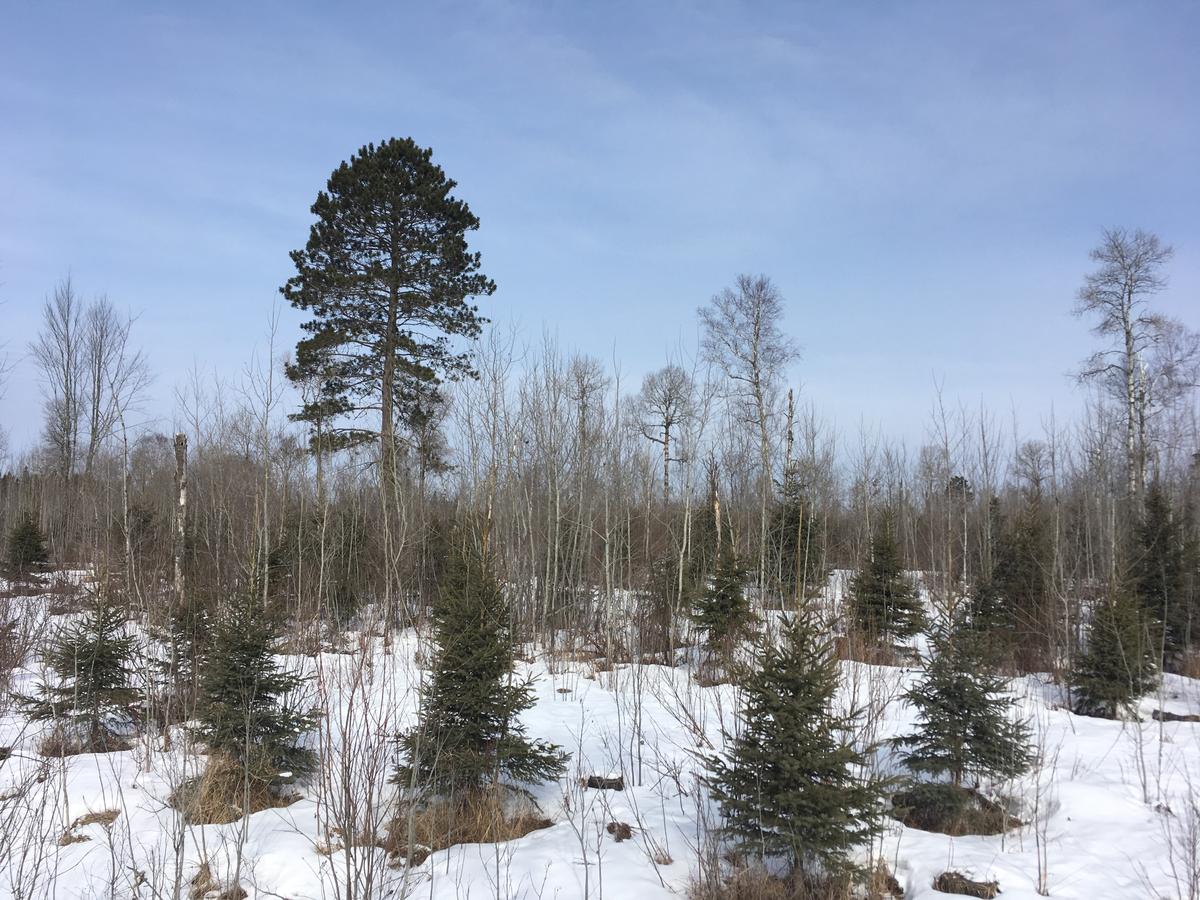Overview
The goal is to establish a mixedwood stand dominated by aspen, white spruce, and balsam fir with minimal site preparation and release costs. The stand is managed to maintain a healthy, diverse forest that provides timber production, wildlife habitat, and social benefits through the use of ecologically based silviculture emphasized through Blandin’s SmartForestrysm forest management style which employs the use of habitat types (analogous to MN DNR native plant communities) to imitate and work with natural stand processes.
Pre-treatment stand description and condition
Stand establishment and management history:
Prior to treatment the area was made up of 36 year old aspen with components of balsam fir, and white spruce in good condition. Some small areas of older (80 y.o.) aspen and white pine were present. Understory was patchy hazel and alder, with very little advance conifer regeneration.
Silviculture Prescription
The goal was to convert a nearly pure aspen stand into a mixedwood condition with increased species and structural diversity through the use of commercial thinning and underplanting of white spruce, followed by an overstory removal of the residual aspen after planted conifer is well established.
What actually happened during the treatment
In June 2006 the area was harvested with a cut-to-length system. The area was commercially thinned from below to a residual basal area of 60 to 65 sq. ft. and produced approximately 10 cords/acre. The residual overstory is intended to provide shading and frost protection to the planted seedlings. In addition, the overstory aspen suppresses the suckering of aspen through hormonal control.

Figure 1: Structure and composition of a boreal mixedwood underplanting trial on UPM Blandin Land prior to final overstory removal.
The following spring (2007) the area was underplanted with containerized stock of white spruce at a density of 400 seedlings/acre. In September of the same year a chemical release was applied to control hazel using 1.5 qt/acre Accord and 1 qt/acre Garlon. This chemical release would likely be unnecessary on sites with less hazel.
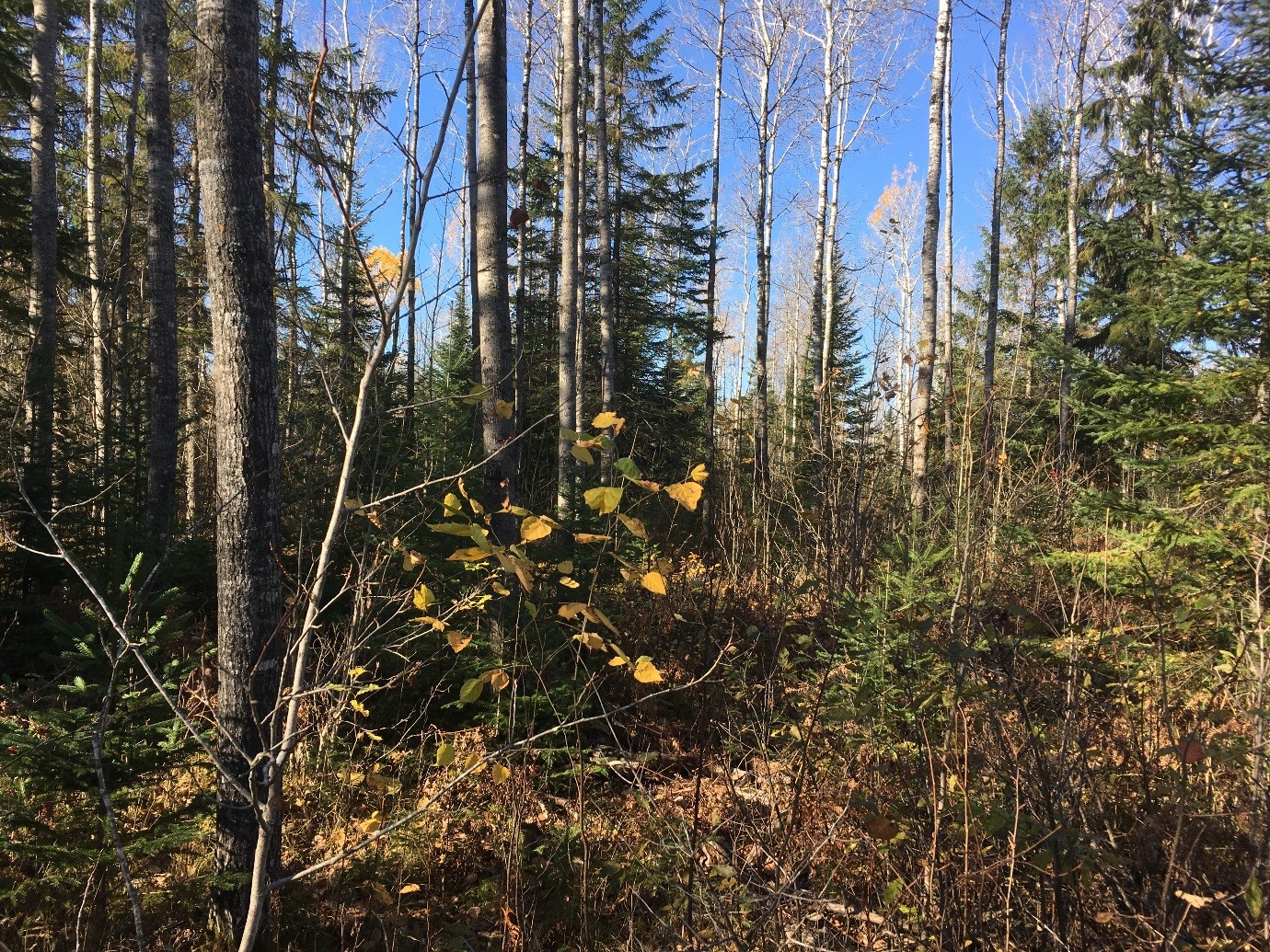
Figure 2: Structure and composition of a boreal mixedwood underplanting trial on UPM Blandin Land prior to overstory removal.
Post-treatment assessment
In the fall of 2016, ten years after the initial harvest, an evaluation of the residual overstory and regeneration indicated establishment of a mixed stand (table 1) with abundant conifer and hardwood regeneration present (table 2). Planted white spruce are well established with heights ranging from 5-10’, and substantial advance regeneration of balsam fir, white spruce, and white pine is present (table 2).
Table 1: Overstory basal area composition of the treatment stand.
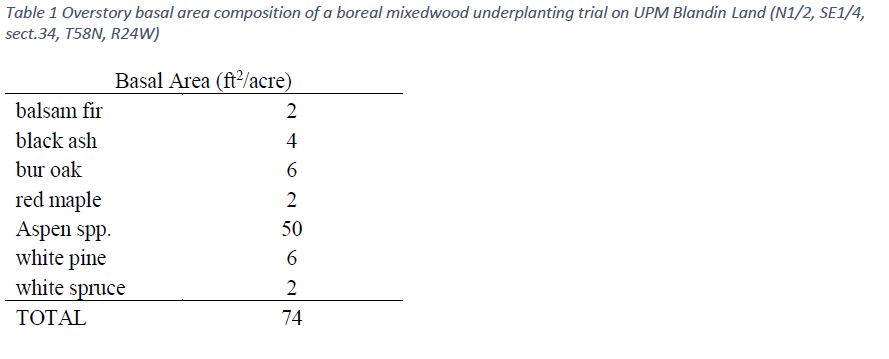
Table 2: Pre-treatment regeneration composition of the treatment stand.
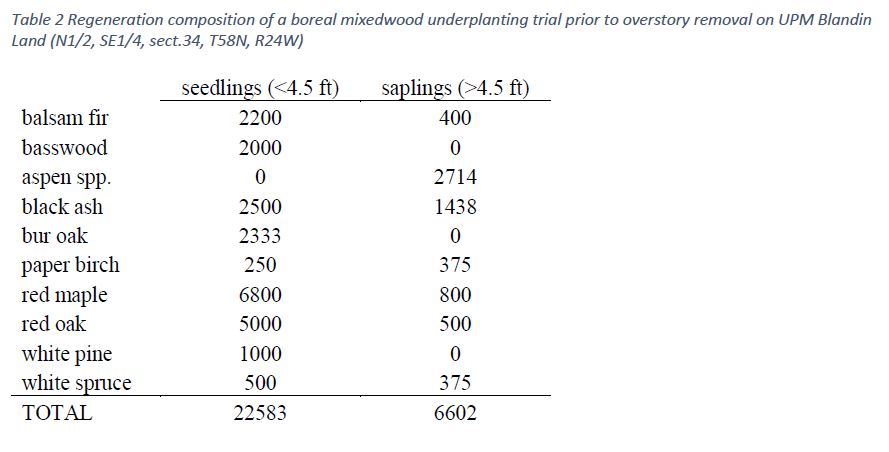
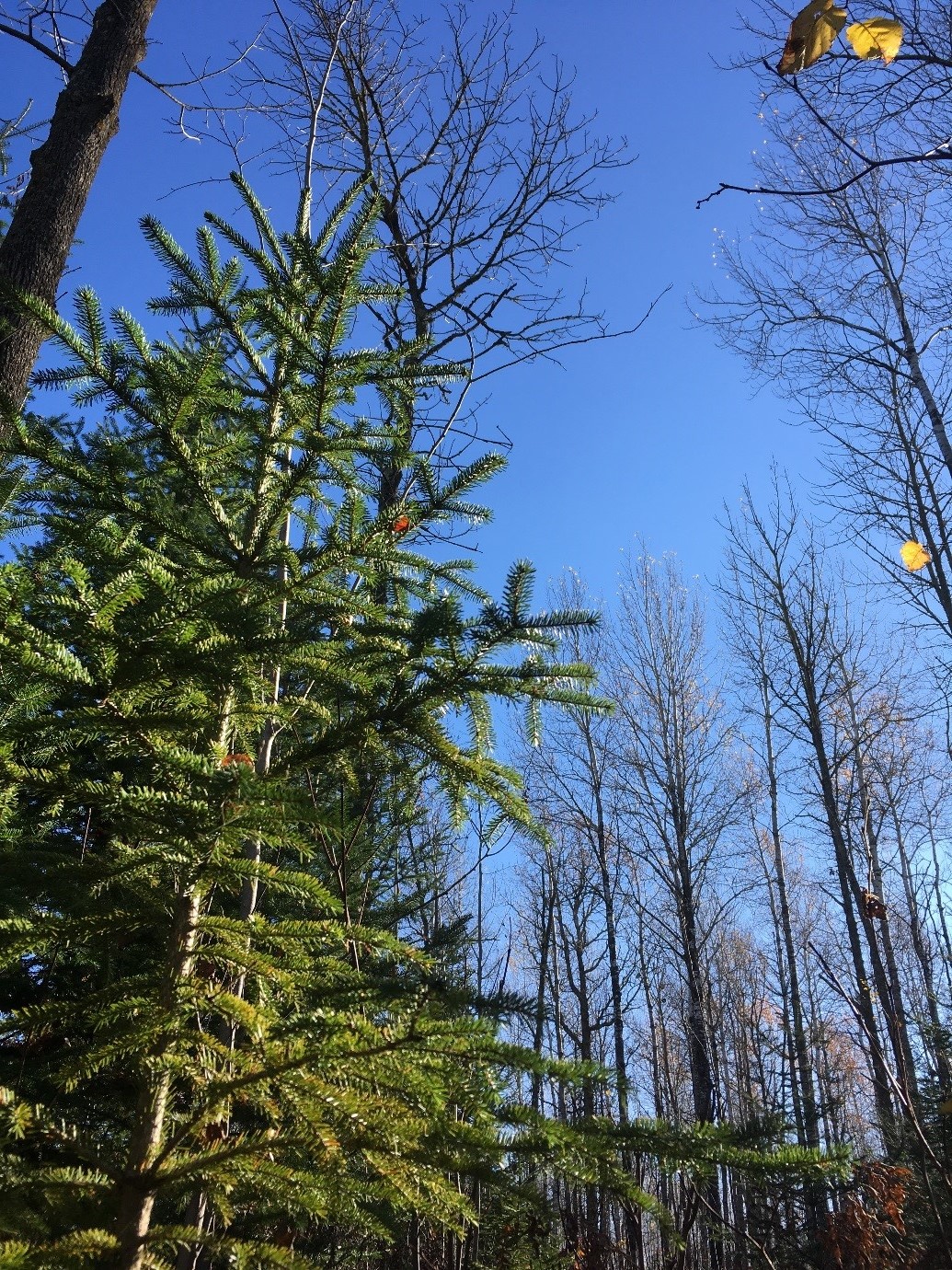
Figure 3: Healthy 10 Year old white spruce sapling in the understory of an underplanted boreal mixedwood stand on UPM Blandin Land.
A nearby stand (SE1/4, NW1/4, sect. 3, T58N, R24W) has received a similar treatment but has had the overstory removed already, regeneration composition in that stand can be seen in table 3.
Table 3: Regeneration composition of a nearby stand.
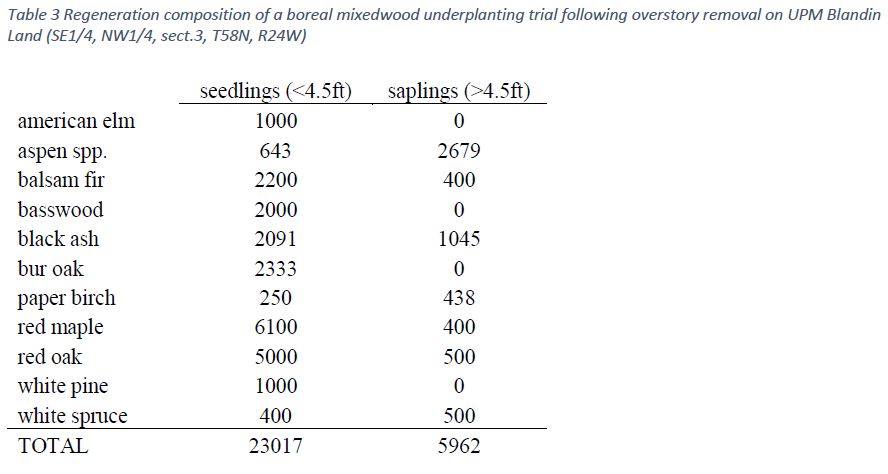
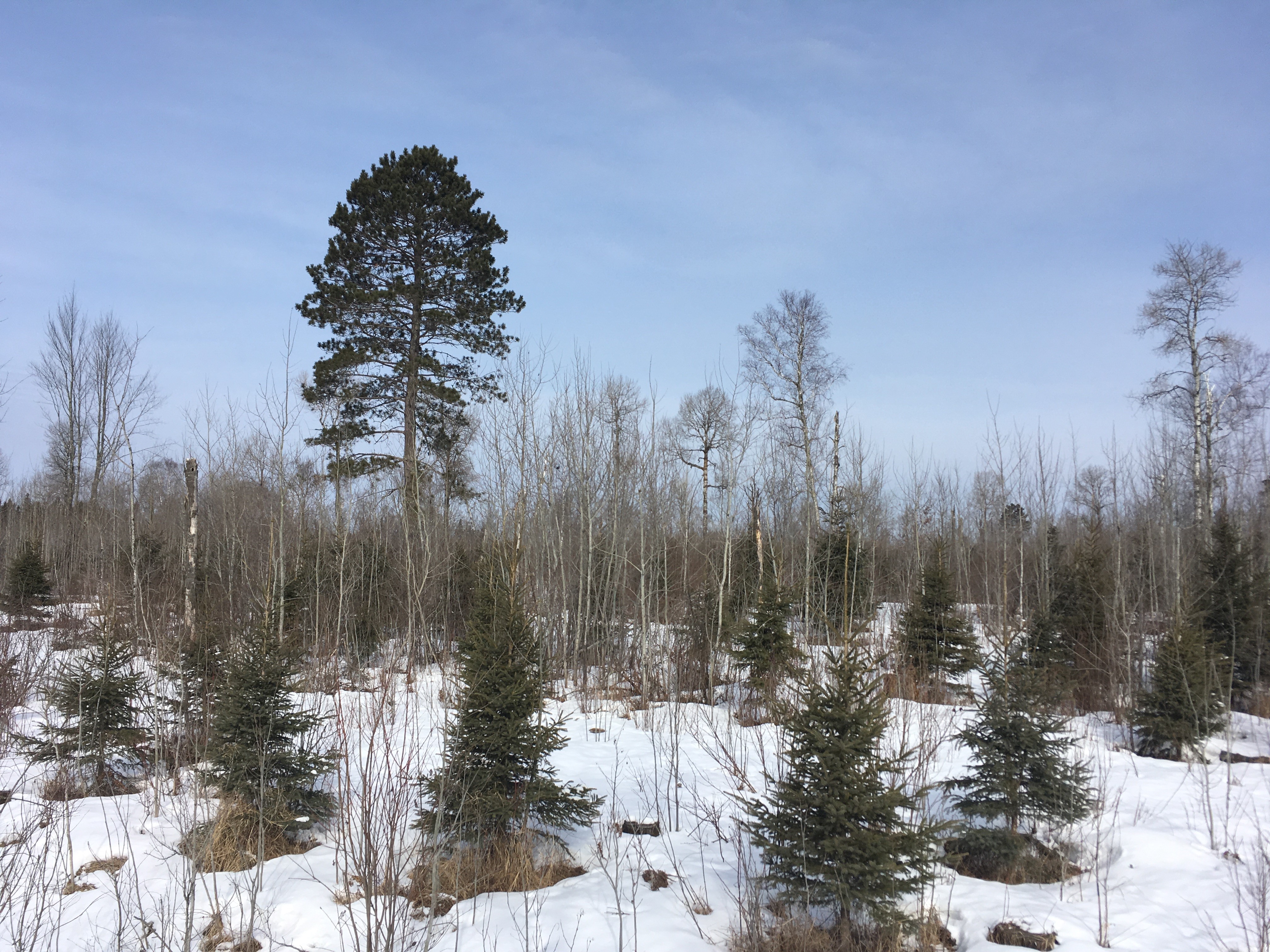
Figure 4: A nearby stand (SE1/4, NW1/4, sect. 3, T58N, R24W) which has received similar prescription, 3 years after final overstory removal.
Plans for future treatments
The stand has been scheduled for overstory removal to occur within the next 2 years to release planted conifer and regenerate the aspen. All aspen, as well as 3+ stick spruce and fir will be removed and is expected to yield 15 cords/acre. Approximately 3 acres will be left with the overstory intact for comparison and will serve as an older forest refuge in the stand.
This case study was developed with support from the United States Department of Agriculture's National Institute for Food and Agriculture (USDA-NIFA), Renewable Resources Extension Act (RREA). Project #MIN-44-E02, principal investigator Eli Sagor, University of Minnesota.
